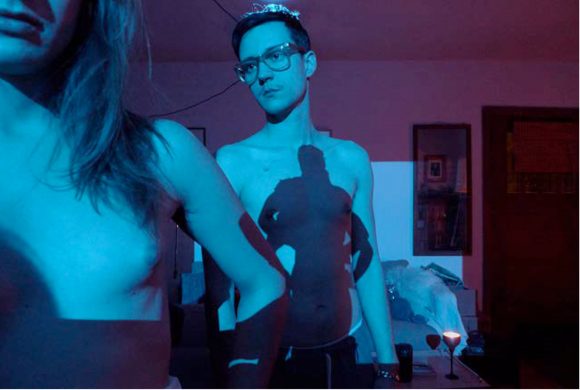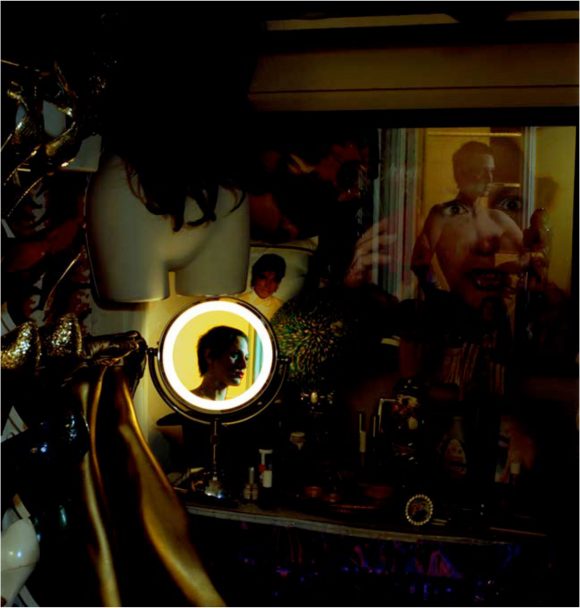Naturality over Normality: Zackary Drucker and Taking Control of Transgender Representation
May 11, 2022
Zackary Drucker, in collaboration with Rhys Ernst, created a series of photographs titled Relationship that lasted from 2008 until 2014 that focused on not only their evolving stages in their respective transitions, but also their attachment to one another. Gaze, energy, and intimacy are all important themes in this series.

Zackary Drucker and Rhys Ernst, Relationship #44, Flawless Through the Mirror, Chromogenic print, 2013.
The representation of transgender bodies in photography has seldom been orchestrated by the owners of those bodies themselves, and it is most commonly seen in didactic settings. The Relationship series shies away from this setting completely. By photographing themselves in various settings, among which was their shared apartment, Drucker and Ernst have shared a number of day-to-day transgender experiences that range from embracing each other, to laying down in bed, to administering HRT. None of these photographs are serving as an example or guide to trans life. Relationship #44, for example, draws the viewer’s attention to the state of their bodies without attempting to explain their physical transitions.
In addition to this, Drucker and Ernst are not performing nor adhering to any type of normality, or conformity to the ‘normal’ behavior in a group as determined by social biases, in these photographs. Instead, there is a sense of naturality, or a reveal of the truth of one’s innate identity without any artificiality. Normality must take society’s cultural acceptances into account, and does not fully demonstrate the truth of identity, despite how desirable it can be. On the other hand, normality puts the body, and the identity tied to it, at the center of power. The Relationship series was created in the years that transgender stories were slowly being added to the mainstream alongside other queer and feminist journeys, thus showcasing a difference between the ‘normal’ mainstream and the ‘natural’ reality. Taking control of power and its relationship with the body are intrinsic to trans representation by trans artists, especially in an age in which the media easily twists and warps their stories.
“We are living in a globalized world, where all of the atrocities and freedoms of other nations are in our visual realm, right in front of us, on our screens, in our hands. It’s imperative that we set a precedent of liberation, of women having autonomous identities, selves, sexualities, agency over our representation, and not having our bodies regulated by men. You know, trans people are still not fully protected as citizens. We are part of a long fight, a long struggle.”
-Zackary Drucker
Sources:
- Meg-John Barker, Queer: A Graphic History (London: Icon Books Ltd, 2016)
- Catherine Morris, Zanele Muholi, Laurie Simmons, Johanna Fateman, Zackary Drucker, and A. L. Steiner, “On Feminism,” Aperture, no. 225 (2016) https://www.jstor.org/stable/44404706.
—
We invite you to explore all the works in the Escalette Collection by visiting our eMuseum.
Wilkinson College of Arts, Humanities, and Social Sciences is the proud home of the Phyllis and Ross Escalette Permanent Collection of Art. The Escalette Collection exists to inspire critical thinking, foster interdisciplinary discovery, and strengthen bonds with the community. Beyond its role in curating art in public spaces, the Escalette is a learning laboratory that offers diverse opportunities for student and engagement and research, and involvement with the wider community. The collection is free and open to the public to view.



